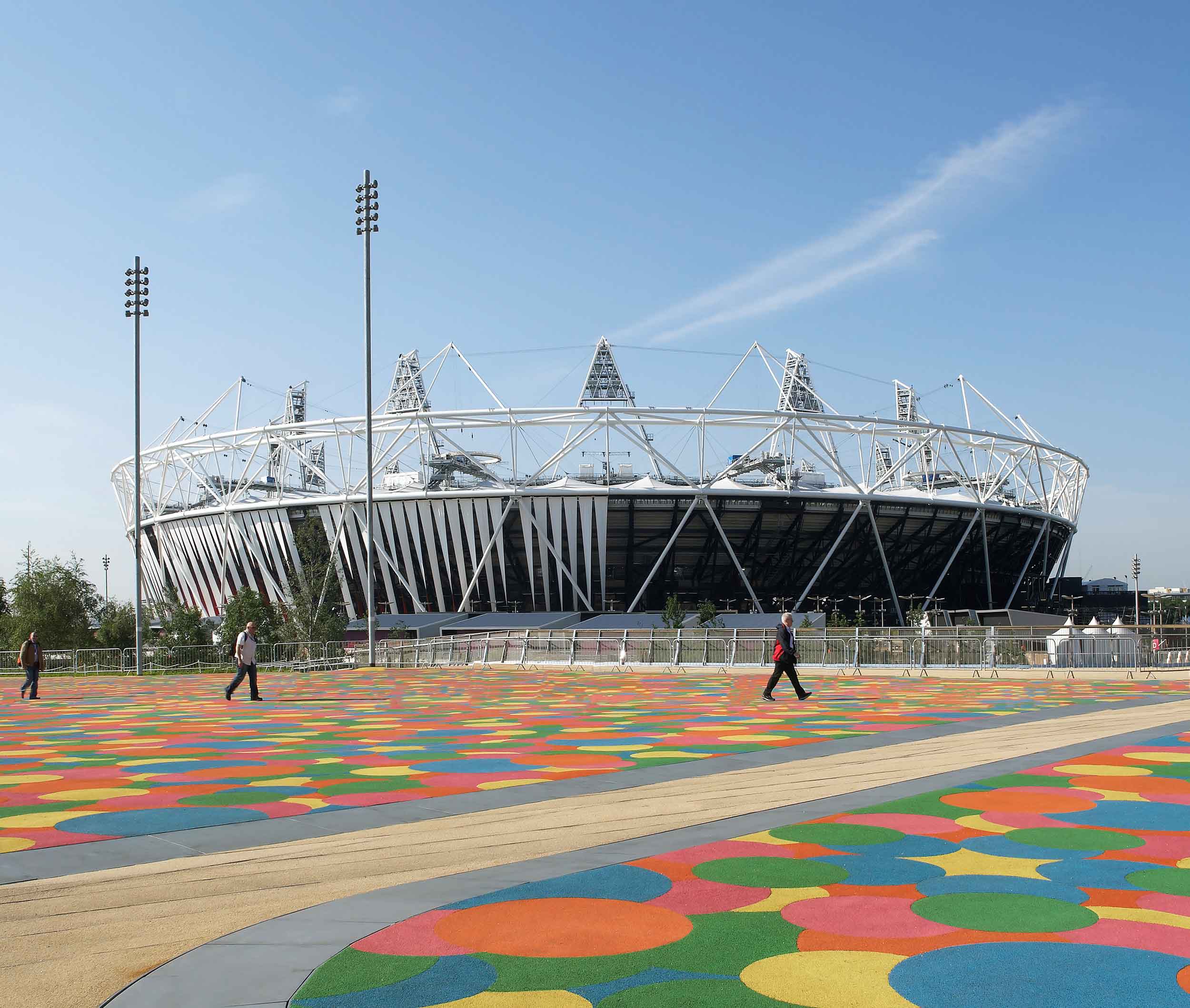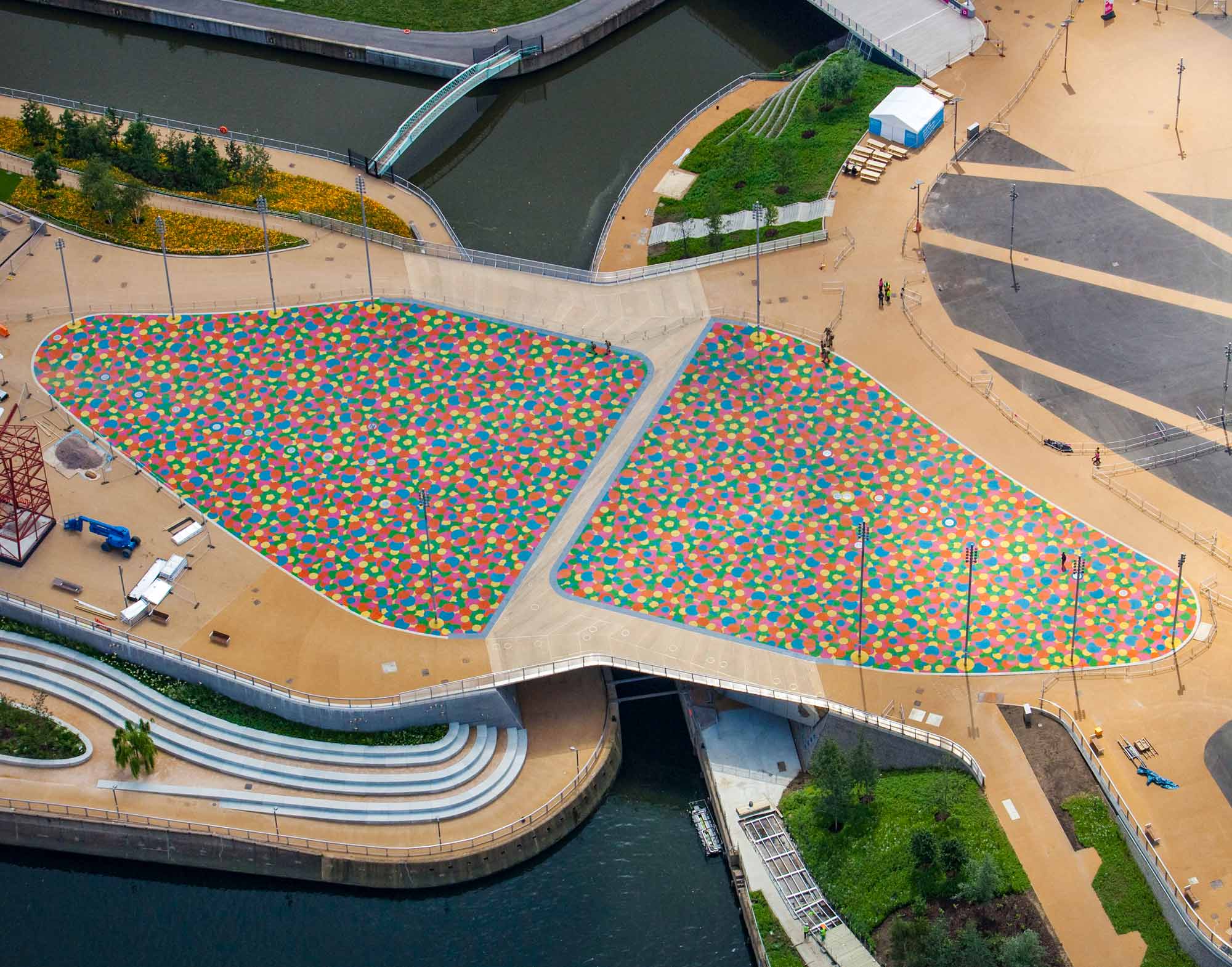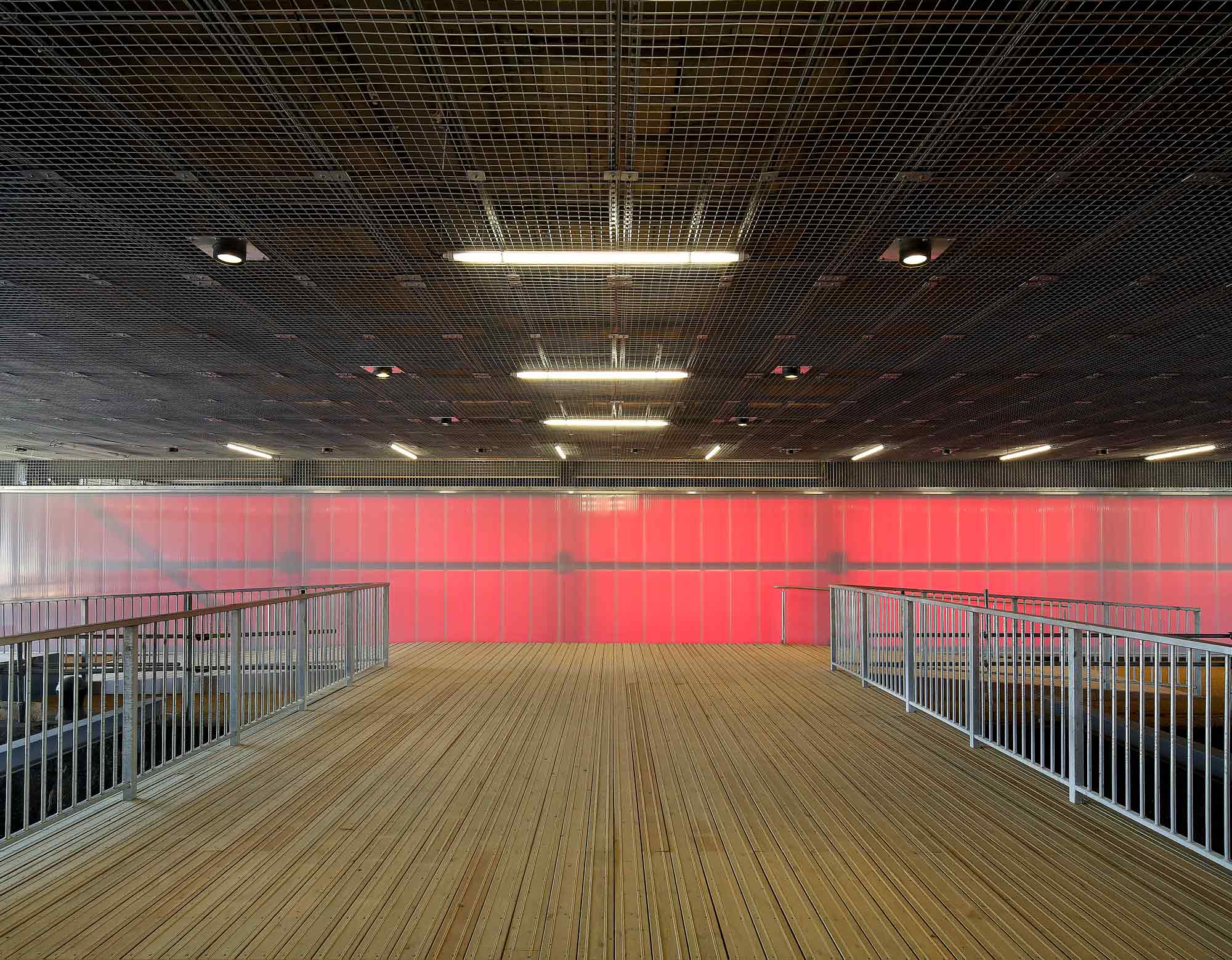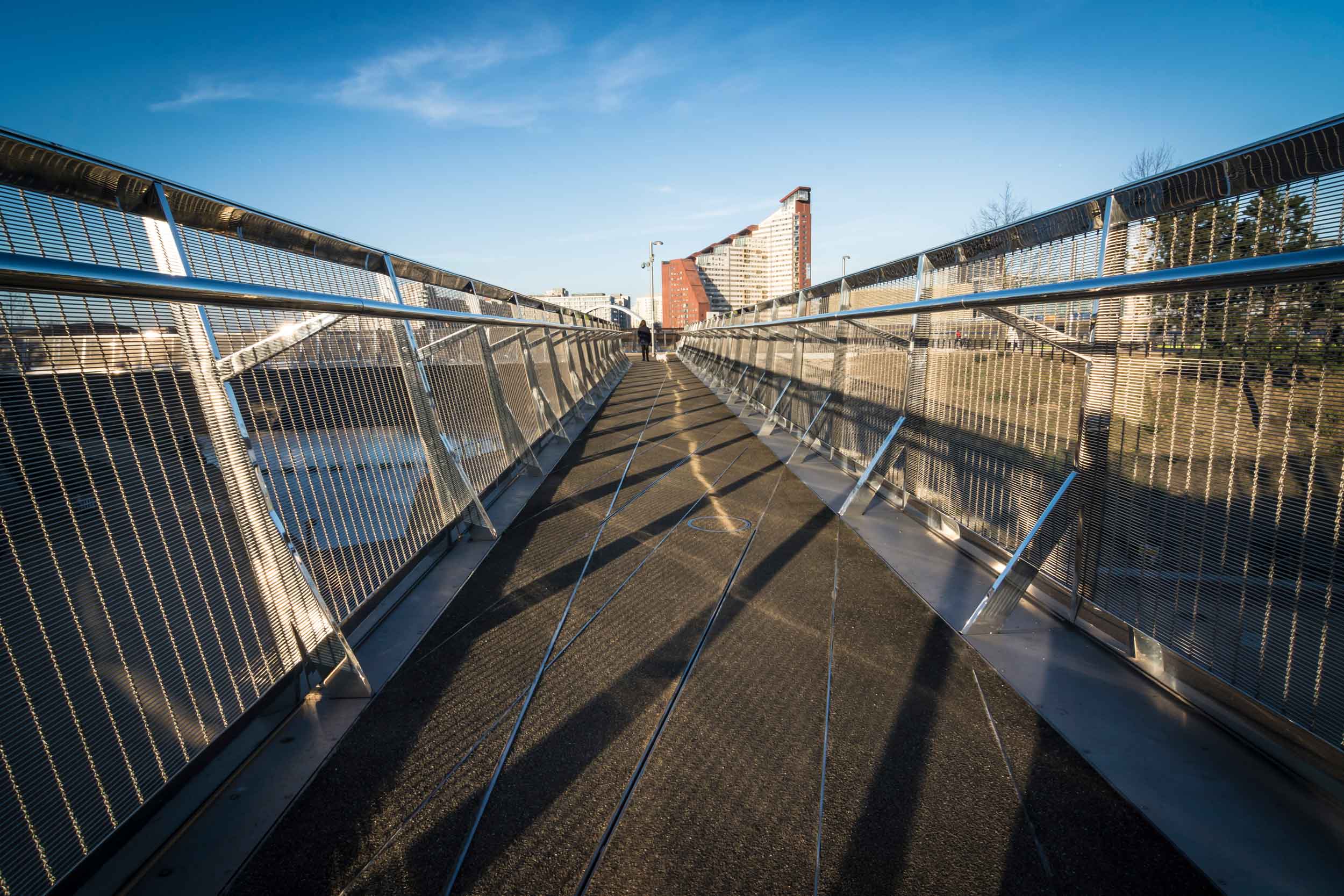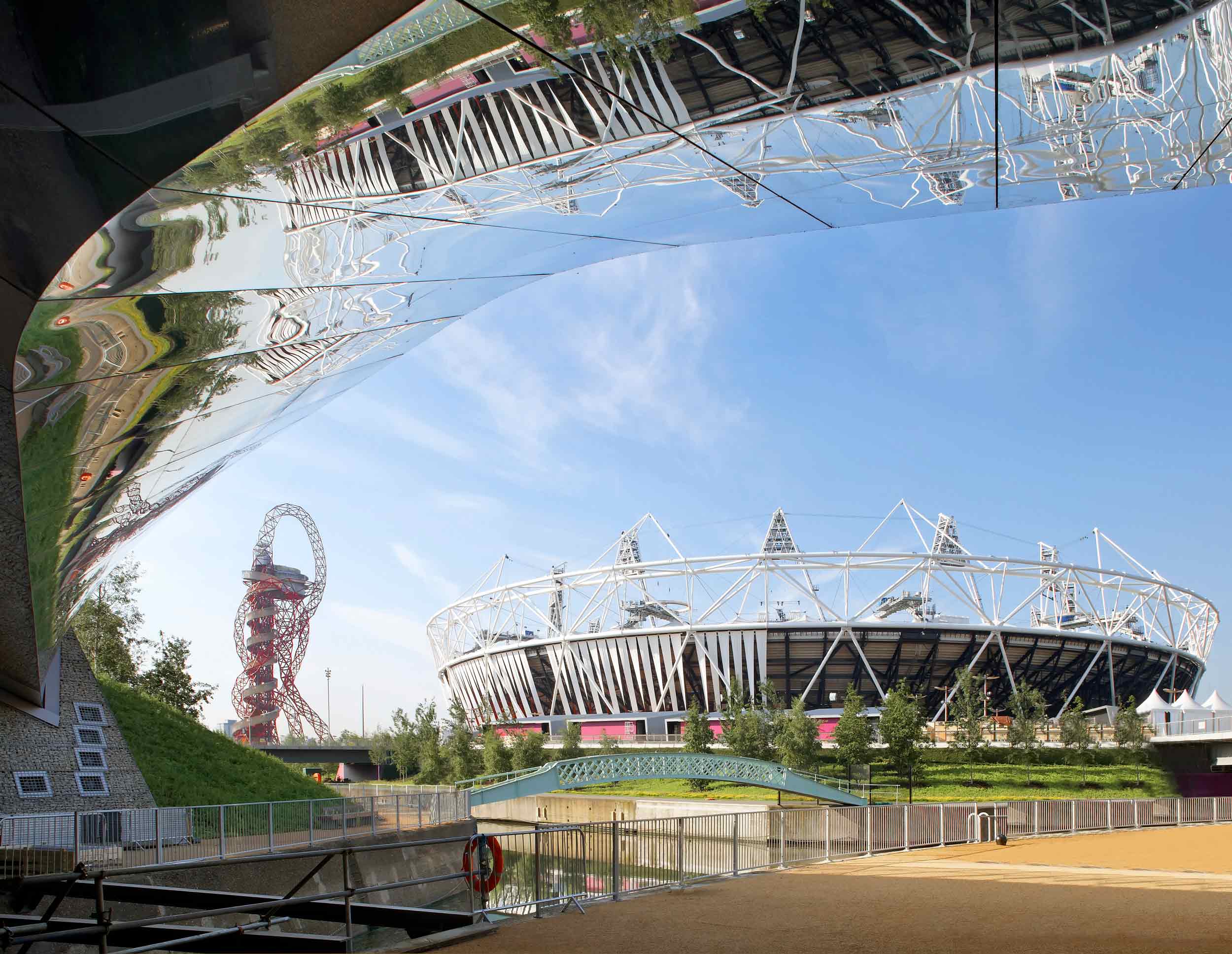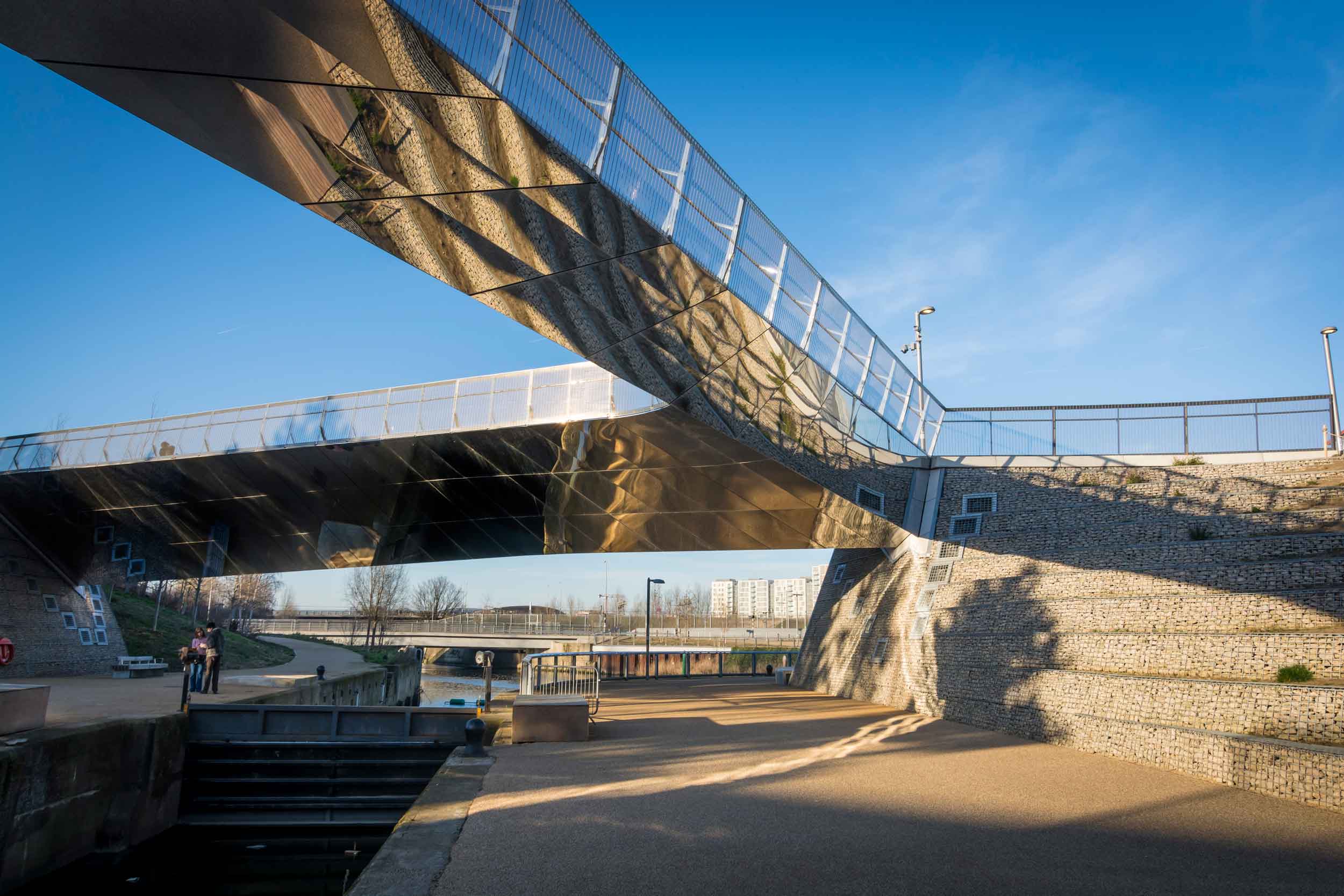
We worked with Heneghan Peng Architects on an innovative footbridge for the London 2012 Olympic Park that not only accommodated vast crowds during the Games, but also transformed into an iconic crossing once they were complete.
Innovative footbridge for the 2012 olympics, transformed into an iconic permanent feature
The competition-winning project crosses a canalised section of the River Lea at Carpenters Lock, adjacent to the Olympic Stadium. The Z-shaped design features two 27 m-long spans, each 6 m wide with a third 56 m diagonal span. This third, ‘gallery’ span is only 1.5 m wide and intended to provide a route for admiring the view. Described as a ‘Dancing Keel’, the bridge is fabricated using warped trapezoidal trusses and clad in mirror-finish stainless steel.
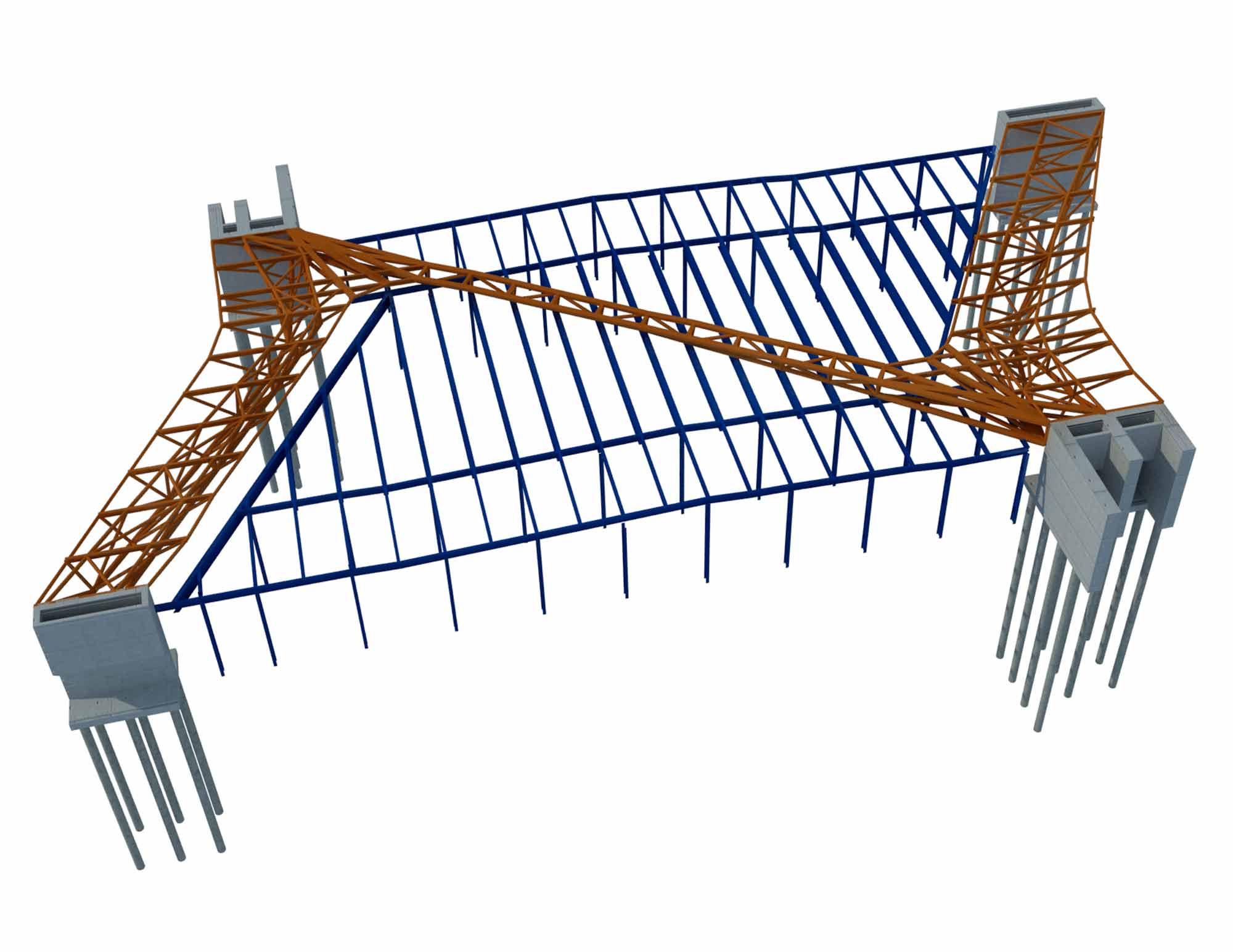
Engineering this structure was a challenge, partly because the two main spans accommodate major utilities. There were also significant limitations to the depth that the structure could occupy to maintain required clearance above the canal.
We delivered a solution whereby the decks were fully fixed to the abutments, allowing load and bending to be transferred directly to the supports, while exploiting the properties of arch construction. This allowed the trusses to be reduced in size, delivering programme and cost benefits.
At its midpoint, the diagonal span is only 900 mm deep. It features a deck formed of concrete poured onto steel plate that is welded to the top of a triangular truss to provide additional stiffness. Minimising vibrations also meant including tuned mass dampers, a structural solution driven by architectural desire for a shallow, long and lightweight span.
Throughout the Games, a temporary infill structure transformed the bridge into a single, 52 m-wide promenade. A steel frame was constructed between the two main spans, supported on temporary columns. A scaffolding system filled the gap between temporary steelwork and deck, minimising costs. The deck itself was fabricated using lightweight multi-coloured rubber tiles.
